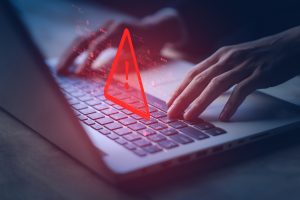Part 1 of our series of topics from Your Complete Brand Protection Guide by Authentix. Our guide helps brands develop holistic and secure brand protection strategies and solutions that safeguard their company, products, customers, and revenue.

Counterfeiting, smuggling, diversion, and infringement- collectively known as illicit trade- continues to be a growing global problem for businesses and consumers. With the increasing volume of counterfeit goods trafficked across the globe seeping into multiple supply chains, a well-strategized brand protection program is more essential than ever to shield what matters most to businesses – customers, brand identity and reputation, and revenue.
Creating a brand protection plan for companies means working together across different parts of the company and locations around the world. It also means building relationships with outside groups like customs, police, and government agencies, as well as stores, websites, and suppliers.
The following are recommended steps to consider when developing an effective brand protection program.
#1 Early Evaluation: Before a company can take advantage of these benefits, it needs to fully understand how serious and widespread the problem of theft can be. Evaluation of the problem is the first step. Also, evaluating which anti-counterfeiting security methods work best for a company’s product and industry will allow the brand owner to get the necessary information on possible security features and packaging design that might be required as part of the final product launch.
#2 Risk Assessment: When identifying product risk, it is important to develop a risk inventory for the products. The level of risk associated with each product will differ depending upon a multitude of factors including supply chain complexity, geography in which the product is sold, price points, margins, complexity to copy, and total demand expected for the product.
The next step is to assess potential brand damage. With brands among the most valuable assets a company owns, the fragile bond of trust between consumers and their products is a corporate and strategic asset that cannot be risked. Any injuries or deaths caused by counterfeits can destroy this relationship, and top management should be aware of the risk and committed to demonstrating leadership on the issue. Brand protection managers and the marketing team also should be involved and participate in assessing the risk of counterfeit attacks and the value of all proposed strategic solutions.
#3 Strategy Development: At this point, responses to the most pressing threats can be translated into action by organizing a method for management, information, and technology tools to respond to threats. This is also the time to allocate resources appropriately based on risk areas and draft a communications plan that covers potential causes of risk, avoidance actions, transference and mitigation actions, and potential impacts and contingency actions.
#4 Detection and Monitoring:  To effectively protect a brand against counterfeiting, businesses must employ comprehensive detection and monitoring strategies that showcase dedication to enforcing their intellectual property rights and prosecuting violators.
To effectively protect a brand against counterfeiting, businesses must employ comprehensive detection and monitoring strategies that showcase dedication to enforcing their intellectual property rights and prosecuting violators.
This includes implementing a variety of security features on product packaging, conducting educational campaigns for public awareness, enhancing legal penalties for counterfeiting, inserting strict anti-counterfeiting terms in vendor contracts, and performing unscheduled audits on distribution partners. Vigilance in monitoring online and physical marketplaces for unauthorized sales, fake profiles, and counterfeit listings, along with the deployment of anti-phishing software, is also crucial for the early detection of threats and swift action to mitigate brand infringement.
#5 Enforcement: Keeping a brand safe means making sure that rules and responsibilities related to intellectual property are properly observed, both online and in the physical world. This task often requires collaborating with the right authorities to handle issues like illicit manufacturing, copyright infringement, counterfeit products being sold, shut down fake websites, and take down counterfeit listings.
#6 Data Analysis, Reporting and KPI Tracking:  To track and measure the effectiveness of a brand protection strategy and ensure the prevention of counterfeit activity as much as possible, businesses should prioritize thorough reporting and analysis, as well as track key performance indicators (KPIs).
To track and measure the effectiveness of a brand protection strategy and ensure the prevention of counterfeit activity as much as possible, businesses should prioritize thorough reporting and analysis, as well as track key performance indicators (KPIs).
This approach enables them to assess the extent of intellectual property violations and tailor strategies to enhance security measures, moving beyond mere takedown metrics to focus on substantial reduction of infringements. By shifting the perspective from brand protection as a cost to a strategic investment, companies can not only safeguard their assets but potentially unlock new revenue streams through focused and outcome-oriented actions.
For a more complete guide to brand protection- why it is necessary, how infringement harms brands and customers, what to look for in a brand protection partner, and insights into the brand protection strategies of the future – download our Complete Brand Protection Guide.
About Authentix
As the authority in authentication solutions, Authentix can help brands create a customized plan to tackle counterfeit products from every angle, collect actionable data, and protect brands and consumers. Authentix works with each company to determine which brand protection solutions are right for their situation.
Authentix brings enhanced visibility and traceability to today’s complex global supply chains. For over 25 years, Authentix has provided clients with physical and software-enabled solutions to detect, mitigate, and prevent counterfeiting and other illicit trading activity for currency, excise taxable goods, and branded consumer products. Through a proven partnership model and sector expertise, clients experience custom solution design, rapid implementation, consumer engagement, and complete program management to ensure product safety, revenue protection, and consumer trust for the best known global brands on the market. Headquartered in Addison, Texas USA, Authentix, Inc. has offices in North America, Europe, Middle East, Asia, and Africa serving clients worldwide.
